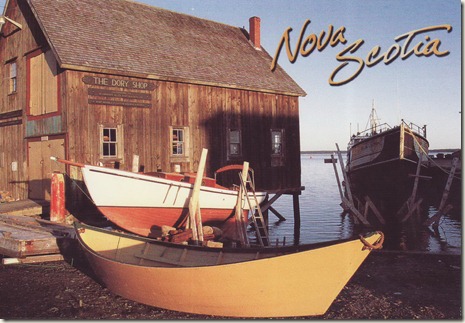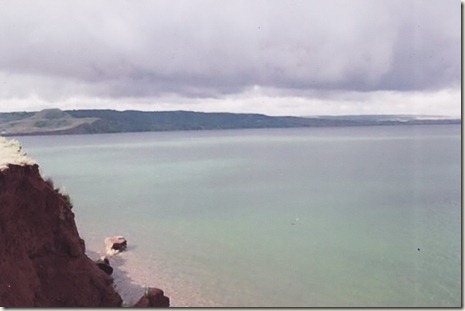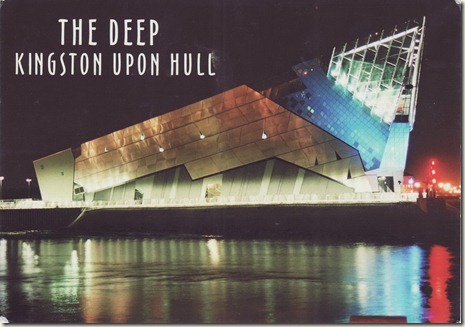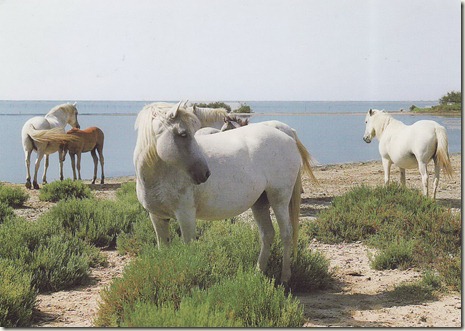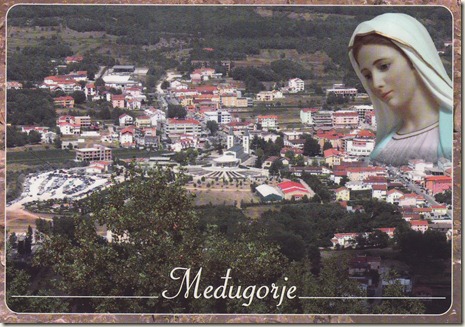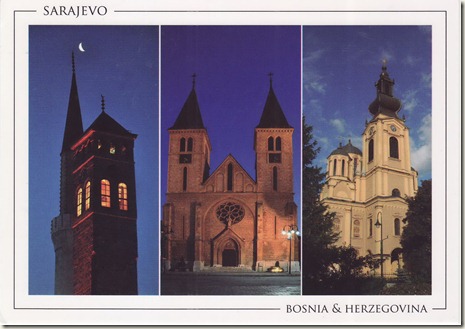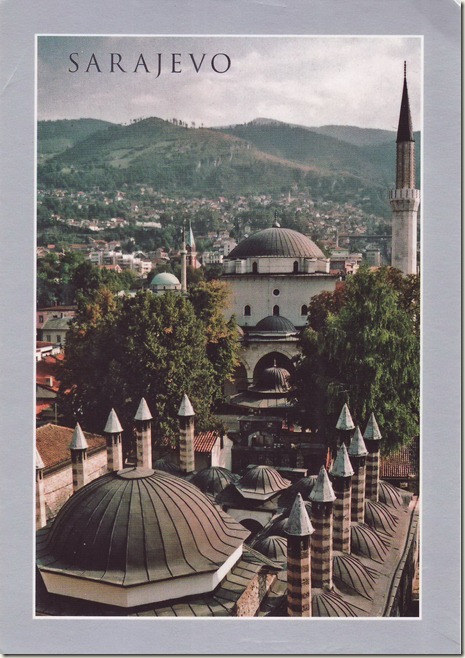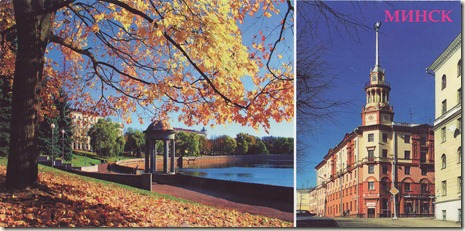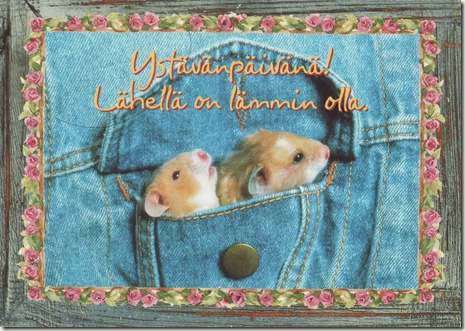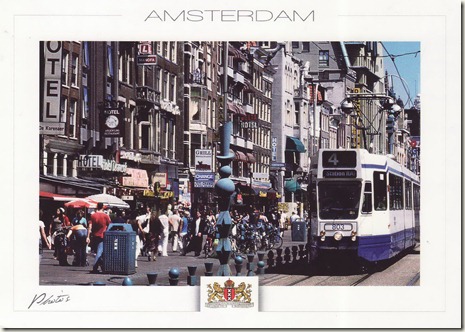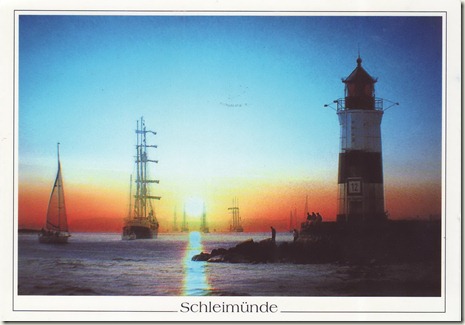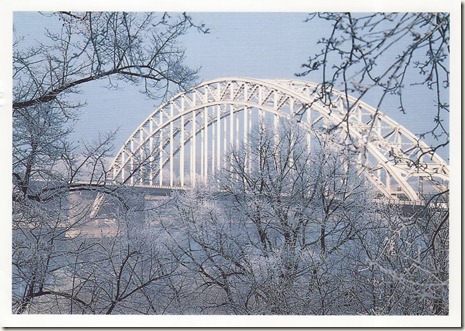CA-162660 385145 130- aя открыткa
Country: Canada
Distance: 5,782 km
Travel time: 8 days
On postcard: Lunenburg, Nova Scotia, a dory shop where the famous flat bottomed boats with flared sides are made.
Lunenburg (2006 population: 2,317), is a Canadian port town in Lunenburg County, Nova Scotia.
Situated on the province's South Shore, Lunenburg is located on a peninsula at the western side of Mahone Bay. The town is approximately 90 kilometres southwest of the county boundary with the Halifax Regional Municipality.
The historic town was designated a United Nations Educational, Scientific and Cultural Organization (UNESCO) World Heritage Site in 1995.
This designation ensures protection for much of Lunenburg's unique architecture and civic design, being the best example of planned British colonial settlement in North America.
Foreign Protestants
For over a hundred years, Lunenburg was an Acadian/ Mi’kmaq village named Mirligueche. It was established under the command of Isaac de Razilly in the first half of the seventeenth century.
Despite the British Conquest of Acadia in 1710, Nova Scotia remained primarily occupied by Catholic Acadians and Mi'kmaq. Father Le Loutre's War began when Edward Cornwallis arrived to establish Halifax with 13 transports on June 21, 1749. By unilaterally establishing Halifax the British were violating earlier treaties with the Mi'kmaq (1726), which were signed after Dummer's War. The British quickly began to build other settlements. To guard against Mi'kmaq, Acadian and French attacks on the new protestant settlements, British fortifications were erected in Halifax (1749), Dartmouth (1750), Bedford (Fort Sackville) (1751), Lunenburg (1753) and Lawrencetown (1754). The Natives and Acadians raided the Lunenburg peninsula eight times in the first six years of its establishment.
Upon the outbreak of Father Le Loutre's War, on October 5, 1749, Governor Edward Cornwallis sent Commander White with troops in the 20 gun sloop Sphinx to Mirligueche (i.e., Lunenburg) and had the village destroyed. Three years after, as the war continued, John Creighton led a group of Foreign Protestants to settle the area and renamed it Lunenburg (1753). In 1753, during Father Le Loutre's War, the British unilaterally established Lunenburg, that is, without negotiating with the Mi'kmaq people. In the spring, Governor Hopson was received warnings from Fort Edward that as many as 300 natives nearby were prepared to oppose the settlement of Lunenburg and intended to attack upon the arrival of settlers. Supervised by Lawrence and protected by several ships of the British Navy and by 160 Regular soldiers, protestant settlers established the village.
The original inhabitants of Lunenburg (mostly Germans from the southern Rhineland, Swiss and French Protestants from Montbeliard) came during the same wave of immigration that produced the Pennsylvania Dutch. They were "Foreign Protestants" encouraged by the British to settle in the area. Lunenburg was settled by Foreign Protestants who came from the present day Tripoint of France, Germany and Switzerland. The town was named in honour of King George II, who also happened to be the duke of Brunschweig-Luneburg.
The Hoffman Insurrection
During Father Le Loutre's War, in mid December 1753, within six months of their arrival at Lunenburg, the new settlers rebelled against their living conditions. The rebellion became known as "The Hoffman Insurrection." The Rebellion was led by John Hoffman, one of the Captains who had established the settlers in the town.
Hoffman led a mob which eventually locked up in one of the blockhouses a number of Commander Patrick Sutherland’s troops and the Justice of the Peace. Commander Patrick Sutherland at Lunenburg asked for reinforcements from Halifax and Colonel Robert Monckton was sent with troops. Monckton arrested Hoffman and brought him to Halifax where he was fined and imprisoned on Georges Island (Nova Scotia) for two years.
Because of the living conditions and encouragement from Le Loutre, a number of the French and German-speaking Foreign Protestants left the village to join the Acadian communities.
French and Indian War
During the French and Indian War (1754–1763), the town was protected by several small blockhouses that were garrisoned by British regulars as well as by provincial troops from Massachusetts. These forts were erected to protect the town from raids by French warships and from attacks by Acadians and Indians. During the Expulsion of the Acadians, specifically the Bay of Fundy Campaign (1755), the British sent the Acadian cattle at Grand Pre to Lunenburg to support the British settlement that was established with Foreign Protestants.
Raid on Lunenburg (1756)
There were eight raids on the Lunenburg Peninsula during the war. For example, Indians (Maliseet) attacked in the Raid on Lunenburg (1756), in which twenty settlers were killed. Despite the protection of increased number of blockhouses built on the peninsula, eight more Indian/ Acadian raids happened against those on the Lunenburg Peninsula over the next three years. A total of 32 people from Lunenburg were killed in the raids with more being taken prisoner. The British reported that most of these raids were by the Mi'kmaq and Acadians at Cape Sable Island.
American Revolution
During the American Revolution, the American Privateers engaged in the Raid of Lunenburg (1775) and the Raid on Lunenburg (1782) and on both occasions devastated the town. In the raid of 1775, the 84th Regiment of Foot (Royal Highland Emigrants) had been defending Nova Scotia, attacking the American privateer ship off of Lunenburg, Nova Scotia, as the privateers were looting the town. The privateers were then taken to Halifax.
War of 1812
During the War of 1812, Nova Scotia’s contribution to the war effort was communities either purchasing or building various privateer ships to siege American vessels. Three members of the community of Lunenburg purchased a privateer schooner and named it Lunenburg on August 8th, 1814. The owners were Capt. Oxner, Henry Wollenkaupt, Philip Rudolf and Henry Mosher. The schooner was ninety-three tons, five guns and a crew of forty-five men.
The Lunenburg captured the American vessel Lucy on September 15th, 1814, and the American ship Ranger on November 15th, both prizes were brought back to Lunenburg. One of the largest American privateer schooners the Lunenburg caught was Minerva, of Wiscasset, Maine. Another was the sloop Experiment, caught off of Point Judith, Rhode Island on January 21st, 1815. Over the following weeks, the Lunenburg captured three American sloops and one schooner by February 15th, 1815.
Bluenose
Lunenburg has long history of building woodenships. The most famous is the world famous schooner Bluenose and her daughter Bluenose II which remains an important tourist attraction in the town, her home port.
Economy
Tourism is now Lunenburg's most important industry and many thousands visit the town each year. A number of restaurants, inns, hotels and shops exist to service the tourist trade. Numerous artists operate their own galleries. The town is home to the Fisheries Museum of the Atlantic, part of the Nova Scotia Museum. The schooner replica Bluenose II is operated by the museum and based out of Lunenburg. The town is also home to the privately run Halifax and Southwestern Railway Museum and the Knaut-Rhuland House Museum.
The town has a history of being an important seaport and shipbuilding centre. There are now numerous small businesses, high-tech industries including Composites Atlantic and HB Studios, and trade plants including High Liner Foods, which was at one point the largest fish plant in Canada. This plant now handles manufacturing and most fishing is done offshore.
Culture
The 2010 Japanese movie Hanamizuki was partly set and filmed in Lunenburg and the science fiction television show Haven is partly filmed there though it is set in the United States. The town is featured prominently in a 2010 series of Cisco Systems network product ads starring Ellen Page.
The Deep, Kingston Upon Hull, England
The Deep is a large underwater aquarium situated at Sammy's Point, at the confluence of the River Hull and the Humber estuary in Hull, England. It opened in March 2002.
Billed as 'the world's only submarium' the tanks contain thousands of sea creatures (including seven species of shark), 2.5 million litres of water and 87 tonnes of salt housed in an iconic structure designed by Sir Terry Farrell and built as part of the UK National Lottery's Millennium Commission project.
Since opening, The Deep has welcomed over two million visitors from around the world.
As well as a tourist attraction, The Deep is a centre for marine research. Behind the scenes a team of dedicated marine biologists look after all of the animals in The Deep’s collection as well as carrying out vital research into the marine environment.
The Deep also has an education program with an average of 20,000 school visits a year passing through its three dedicated classrooms.
The Deep is one of the most successful millennium projects in the Country.
A visit will generally last between 2 and 3 hours. Using a combination of hands on interactives, audiovisual presentations and living exhibits it tells the story of the world's oceans. Visitors will be taken on a journey from the beginning of time through the present day oceans the icy darkness of a futuristic Deep-Sea research lab, Deep Blue one. One is directed up to the third floor and from this level a gently sloping ramp with interspersed audio-visual displays and interactive features leads you back down a couple of levels. Along the way, the handrail depicts time from the beginning of the Earth (1.5 cm = 1,000,000 years) and the displays are located at the chronological point along the way.
At the bottom of the ramp is a bright lagoon with many brightly coloured tropical fish. Details of their habitat can be found on the interactive "find your creature" panels.
Next comes the main feature, a 10 metre deep pool containing 2.5 million litres of water, several sharks and large rays and a multitude of other fish. Early each afternoon, a show dive is performed where two members of the team dive to the bottom of this tank and feed the sharks and rays by hand.
Further things to see include fish that glow in the dark, coral and sea horses. Finally, there is an interactive area where one can learn to control an underwater diving vessel.
The Deep is a charitable public aquarium dedicated to increasing peoples enjoyment and understanding of the world’s oceans.
The Deep hosts a variety of special events for schools, families and others, all maintained for all ages: details can be found on its website.
FR-142858 128- aя открыткa
Country: France
Distance: 1,844 km
Travel time: 7 days
On postcard: Camargue (horse)
The Camargue is an ancient breed of horses found in the Camargue area in southern France. For centuries, possibly thousands of years, these small horses have lived wild in the harsh environment of the Camargue marshes and wetlands of the Rhone delta. There they developed the stamina, hardiness and agility for which they are known today. They are the traditional mount of the gardians–the Camargue "cowboys" who herd the black Camargue bulls used in bullfighting in southern France. Camargue horses galloping through water is a popular and romantic image of the region.
Camargue horses are always gray. This means that they have black skin underlying a white hair coat as adult horses. They are born with a hair coat that is black or dark brown in colour, but as they grow to adulthood, their hair coat becomes ever more intermingled with white hairs until it is completely white. They are small horses, generally 13 to 14 hands (52 to 56 inches, 132 to 142 cm). Despite their small size, they have the strength to carry grown men. Rugged and intelligent, they have a short neck, deep chest, compact body, well-jointed, strong limbs and a full mane and tail.
There exists a strong sense of regionalism in Camargue area, so registration for the horses is treated similarly to an Appellation d'origine contrôlée.
Some researchers believe the Camargue are descended from the ancient Solutré horse hunted during the Upper Paleolithic period. Extensive archeological evidence has been found in the present-day Burgundy region of France. The Camargue breed was appreciated by the Celtic and Roman invaders who entered the Iberian Peninsula. Their genealogy is closely tied with Iberian horses, especially those of the northern part of the peninsula. The original Spanish jaca was probably a cross between the Celtic pony and the Camargue. It was later improved by crosses with northern European horse types and ultimately with the southern peninsular horse, as the Moors spread their influence toward the Pyrenees.
As a result, the Camargue genes probably penetrated the Americas through the influence of the jaca, the warhorse taken to new lands where hardiness was a requirement. Breeds such as the Chilean horse and Criollo show signs of some characteristics that are common in the Camargue breed.
In 1976, to preserve the standards and purity of the breed, the French government set breed standards and started registering the main breeders of the Camargue horse. In 1978, they set up the breed stud book. To be registered, foals must be born out of doors and must be seen to suckle from a registered mare as proof of parentage. Foals born inside the defined Camargue region are registered sous berceau, while those born elsewhere are registered hors berceau ("outside the cradle" or "birthplace"). They have the heavy, square heads of primitive horses, but the influence of Arabian, Barb and Thoroughbred blood can also be seen. The gardians look after the horses, which are rounded up annually for health inspections, branding, and gelding of unsuitable stock.
In England, the only breeding herd is at Valley Farm, in Wickham Market, near Woodbridge, Suffolk. Valley Farm is also the home of the British Camargue Horse Society, which represents the Camargue Breed in Britain by maintaining a stud book for British-bred Camargue Horses and registering ownership of Camargue Horses in Britain.
Uses
Their calm temperament, agility, intelligence and stamina has resulted in these horses being used for equestrian games, dressage, and long distance riding, which is growing in popularity in France.
Međugorje, Bosna i Hercegovina
Međugorje or Medjugorje (Croatian pronunciation: [ˈmɛdʑuɡɔːrjɛ]) is a town located in western Bosnia and Herzegovina, in the Herzegovina region around 25 km southwest of Mostar and close to the border of Croatia. Since 1981, it has become a popular site of religious pilgrimage due to reports of apparitions of the Virgin Mary to six local Catholics.
The name Međugorje literally means "an area between mountains". At an altitude of 200 metres above sea level it has a mild Mediterranean climate. The town consists of an ethnically-homogeneous Croat population of over 4000. The Roman Catholic parish (local administrative and religious area) consists of five neighbouring villages, Međugorje, Bijakovići, Vionica, Miletina and Šurmanci.
In March 2010, the Holy See announced that the Congregation for the Doctrine of the Faith was forming an investigative commission, composed of bishops, theologians, and other experts, under the leadership of Cardinal Camillo Ruini, the Pope's former Vicar General for the Diocese of Rome.
Reported apparitions
"Our Lady of Međugorje" is the title given to the Blessed Virgin Mary by those who believe that she has been appearing since 24 June 1981 to six people in Međugorje (then part of socialist Yugoslavia).
The visionary Marija Lunetti (Pavlovic) claims to receive messages from the Virgin Mary on the twenty-fifth of every month, while Mirjana Soldo (Dragicevic) reports receiving messages on the second of the month.
The messages reputed to Our Lady of Međugorje have a strong following among Catholics worldwide. Međugorje has become one of the most popular pilgrimage sites for Catholics (and people of other faiths) in the world and has turned into Europe's third most important religious place, where each year more than 1 million people visit. It has been estimated that 30 million pilgrims have come to Međugorje since the reputed apparitions began in 1981. Many have reported visual phenomena including the sun spinning in the sky or changing colors and figures such as hearts and crosses around the sun. Some visitors have suffered eye damage while seeking to experience such phenomena.
On June 4, 2008, before a regular Wednesday general audience, Pope Benedict XVI blessed a statue of Our Lady of Međugorje in Saint Peter's Square, Vatican City. However, the phenomenon is not officially approved by the Catholic Church.
In March 2010, the Holy See announced that the Congregation for the Doctrine of the Faith was forming an investigative commission, composed of bishops, theologians, and other experts, under the leadership of Cardinal Camillo Ruini, the Pope's former Vicar General for the Diocese of Rome. The Commission is expected to report any findings to the Congregation, which has responsibility for any possible judgment on the case.
Early history
To the east of Međugorje in the Neretva valley, the Serbian Orthodox Žitomislić Monastery has stood since 1566. Gravestones erected in the Middle Ages have remained to this day in the Catholic cemetery Groblje Srebrenica in the hamlet of Miletina as well as in the hamlet of Vionica. In the area of the cemetery in Miletina, structures from the Roman era stood, whose ruins have not yet been fully excavated.
19th and early 20th century
In 1882 the railroad line between Mostar and the Adriatic coast of Dalmatia was built, with a station in the hamlet of Šurmanci, through which the village gained access to rail transport.
The Catholic parish of Sveti Jakov ("Saint James") was erected in 1892 by the Bishop of Mostar Paškal Buconjić. The twelve-meter tall crucifix on the mountain called Križevac (Cross Mountain), completing the parish's Stations of the Cross (križni put), was completed in 1934.
Second World War
In 1941, when Međugorje belonged to the Independent State of Croatia, the Žitomislić Monastery was plundered by the Ustasha, and its refectory was burned down.
On June 21, 1941, members of the Ustasha committed a massacre in the hamlet of Šurmanci against 559 Serb civilians, which led Mostar bishop Alojzije Mišić to write a letter of protest to the Archbishop of Zagreb Aloysius Stepinac. The Communist government of Yugoslavia had the pit containing the bodies sealed with a concrete slab; hence they were only exhumed and reburied at the cemetery of Prebilovci in the neighboring town of Čapljina in 1989.
Development of the pilgrimage site
On June 24, 1981, reports began of Marian apparitions on Crnica hill in the Bijakovići hamlet, and shortly thereafter confrontations with Yugoslav state authorities began. Pilgrims' donations were seized by the police and access to what was called the Apparition Hill was largely blocked.
In October 1981, Jozo Zovko, then the pastor of the town, was sentenced to three and a half years imprisonment with forced labor for allegedly participating in a nationalistic plot. After Amnesty International, among others, appealed for his release and a judicial appeal was made, the sentence was reduced in the Yugoslav Federal Court in Belgrade to one and a half years, and the priest was released from prison in 1983.
In the last years before the collapse of Yugoslavia, the travel of pilgrims was no longer hindered by the state.
Međugorje during the Bosnian War
During the Bosnian War Međugorje remained in the hands of the Croatian Defence Council and in 1993 became part of the internationally unrecognized Croatian Republic of Herzeg-Bosnia. By the Dayton Agreement in 1995, Međugorje was incorporated into the Federation of Bosnia and Herzegovina, populated mostly by Bosniaks and Croats.
In 1992 the town was the launching point of a so-called ethnic cleansing on the part of the Croatian Defence Council, which led to the complete destruction of the Serbian Orthodox Žitomislić Monastery. The property of the Franciscan order in Bijakovići below Podbrdo ("Apparition Hill") was used during the war years as a testing ground for grenade launchers by the militia of a local weapons dealer.
On April 2, 1995, at the high point of conflict within the local diocese, Bishop Ratko Perić was kidnapped by Croatian militiamen, beaten, and taken to a chapel run by one of the Franciscans associated with Međugorje, where he was held hostage for ten hours. At the initiative of the mayor of Mostar he was freed without bloodshed, with the help of the United Nations Protection Force.
Development after the war
After the ending of the Bosnian War, peace came to the area: UN peace troops were stationed in western Herzegovina. Efforts by the politician Ante Jelavić to create a Croatian entity were unsuccessful, and Međugorje remained part of the Federation of Bosnia and Herzegovina.
The town and its environs boomed economically after the war. Over a thousand hotel and hostel beds are available for religious tourism. With approximately one million visitors annually, the municipality of Medjugorje has the most overnight stays in Bosnia-Herzegovina.
The Mostar International Airport, located approximately 20 km to the northeast, which was closed in 1991, reopened for civil aviation in 1998 and has made air travel to region easier since then. The road network was expanded after the Bosnian War. In addition the hamlet of Šurmanci in the lower Neretva valley has a train station on the route from Ploče to Sarajevo.
On April 6, 2001 demonstrations occurred in the region, with some violence, after the NATO-led Stabilisation Force had closed and searched the local branches of the Hercegovačka banka ("Herzegovina Bank"), through which a large part of the currency transactions in Herzegovina, including international donations intended for Međugorje, were carried out, on suspicion of white-collar crime. The Franciscan Province responsible for the parish was a shareholder of the bank.
Gazi Husrev-begova Džamija + Sahat Kula, Katedrala Srca Isusova, Saborna Crkva Rođenja Presvete Bogorodice, Grad Sarajevo, Bosna i Hercegovina
Sarajevo Clock Tower (Sahat Kula) is one of the highest and most beautiful ones in Bosnia and Herzegovina. It was built in the 17th century.
After a fire in 1697, when it was burnt during the invasion of Eugene of Savoy, Sahat Kula was restored, but again it was damaged, and again renewed in 1762.
After the Austro-Hungarian occupation the top of the tower was added, and a new clock, since the Turkish one, was old and had to replaced, was brought to Sarajevo by two Sarajevo traders, one of them Hašimaga Glođo, and the other Mustafa Hadžikapetanović, from London in 1874.
The old clock was taken to Vratnik, and placed on the Vratnik Mosque. On the tower, the clock mechanism is branded by Gillete & Bland Croydon, made in 1873, in London.
Builder of the tower is Gazi Husrev-bey, one of the greatest Bosnian vakifs from Ottoman period. The first written proof of it dates from the 17th century. The tower has 76 wooden steps, lined up in the squared series, up on which Muvekit climbes once a week to adjust the time.
The clock must be adjusted, because it shows the time “a la turca” (lunar hour). It is believed that this is the only (public) clock in the world that shows the time by the Lunar calendar.
This clock shows exactly noon at the moment of sunset in Sarajevo. In the yard of Beys mosque there is Muvaqqithana, where at, based on precise measurements and containers with water was accurately determined the time of pray. In the year 1967 the clock was repaired, and the hands and numbers on all four sides were gilded.
When, during the Islamic holy month of fasting, Ramadan clock tower at strikes 00:00, it is the time of Iftar.
After the first beat, on the Beys mosque kandilji are lighted, and after that from Bijela Tabija, cannon which traditionally shoots, indicates the end of fasting for that day.
The Cathedral of Jesus' Heart (Bosnian/Croatian: Katedrala Srca Isusova) in Sarajevo, commonly referred as the Sarajevo Cathedral is the largest cathedral in Bosnia and Herzegovina. It is the seat of the Vrhbosanski Archbishop, currently Cardinal Vinko Puljić, and center of Catholic worship in the city. The Cathedral is located in the city's Old Town district.
The Cathedral of Jesus' Heart was built in honor of the Sacred Heart of Jesus, an important Catholic concept. Architect Josip Vancaš modeled it after the Notre-Dame de Paris using the neo-Gothic style and elements of Romanesque architecture. Work began on August 25, 1884, and was completed in the same month in 1889. The Bishop of Dubrovnik was present for the opening.
The building was damaged during the Siege of Sarajevo, but was not completely destroyed, and the damage has since been repaired. The building is often used as a symbol of the city: The design above the door to the Cathedral is part of the flag and seal of Sarajevo Canton and the Romanesque towers are featured on the flag and coat of arms of Sarajevo.
The Cathedral Church of the Nativity of the Theotokos (Serbian: Саборна Црква Рођења Пресвете Богородице or Saborna Crkva Rođenja Presvete Bogorodice) is the largest Serbian Orthodox church in Sarajevo and one of the largest in the Balkans.
The cathedral is dedicated to the nativity of the Theotokos. It was erected at the request of the Orthodox parish of Sarajevo between 1863-1868. The church is constructed as a three section basilica incribed in a cross shaped plan, and has five domes. The domes are build on the beams, the central one is much larger than the other four side domes. The church is arched by round elements. The small gilded baroque style belfry is built in front of the entrance. The interior walls are decorated by painted ornaments. In the lower zones of the walls the painted ornaments are simulating the marble stone construction look. Arches and vaults are decorated in ornaments only. In 1898 the Orthodox Metropolian Palace was built near the cathedral.
The head master for construction was Andreja Damjanov, a man from the great Damjanovi-Renzovski family of master builders, masons, painters, iconographers, carpenters and stonecutters from the village of Papradishte near Veles, Macedonia.
Gazi Husrev-begova Džamija, Grad Sarajevo, Bosna i Hercegovina
The Gazi Husrev-beg Mosque (Bosnian: Gazi Husrev-begova Džamija, Turkish: Gazi Hüsrev Bey Camii), is a mosque in the city of Sarajevo, Bosnia and Herzegovina. It is considered the most important Islamic structure in the country and one of the world's finest examples of Ottoman architecture. It is located in the Baščaršija neighborhood in the Stari Grad municipality, and remains one of the most popular centers of worship in the city.
The Gazi Husrev-beg Mosque was built by the famous Ottoman architect Mimar Sinan, who would later go on to build the Selimiye Mosque in Edirne for the Sultan Selim I. The mosque was financed in 1531 by Gazi Husrev-beg, the provincial governor of Bosnia. Gazi Husrev-beg is widely considered Sarajevo's greatest patron, as he financed much of Sarajevo's old city at this time.
Magnificent stalactite ornamentation in the angles under the dome and in the place where the imam leads the prayers, as well as other polychromatic decoration, valuable carpets and the light effects through the 51 windows produces a sense of greater space than there is in reality. At every time of prayer in this mosque, the great benefactor Gazi Husrev-beg is remembered.
In his legacy, he stated: "Good deeds drive away evil, and one of the most worthy of good deeds is the act of charity, and the most worthy act of charity is one which lasts forever. Of all charitable deeds, the most beautiful is one that continually renews itself."
Gazi Husrev-beg also built the same mosque called Hüsreviye Mosque in Aleppo, Syria, between 1531 and 1534.
During the Siege of Sarajevo, Serbian forces purposely targeted many centers of the city's culture, such as museums, libraries, and mosques, and fired on them generally. As the largest and best known, the Beg's mosque was an obvious target.
Heavily damaged in the war, it was renovated in 1996 with foreign help. Haverford College Professor Michael A. Sells has accused the renovators (whose money came in large part from Saudi Arabia) of Wahhabism in the mosque. Prior to reconstruction, the interior was far more intricate, but today the walls are simply white, much of the detail, artistry, and color taken out. Complete restoration and re-painting of the mosque began in 2000. It has been done mainly by Hazim Numanagić, a Bosnian calligrapher.
BY-168535 127- aя открыткa
Country: Belarus
Distance: 458 km
Travel time: 9 days
On postcard: Минск. Набережная реки Свислочь. Ул. Коммунистическая.
BY-163045 120- aя открыткa
Country: Belarus
Distance: 474 km
Travel time: 7 days
On postcard: Витебск. Памятник "Уличный клоун". Выставочный зал «Духовской круглик”.
В Витебске установили скульптурную композицию «Уличный клоун».
Ее торжественное открытие приурочили к дням проведения Международного фестиваля искусств «Славянский базар в Витебске».
Скульптурная композиция «Уличный клоун» разместилась недалеко от Летнего амфитеатра — главной концертной площадки фестиваля «Славянский базар в Витебске».
Необычный подарок сделал Витебску заслуженный артист России, создатель и руководитель «Невероятно странного цирка» Николай Челноков, а создал бронзового клоуна с гармошкой и веселым пуделем известный Витебский скульптор Иван Казак.
Всеобщее внимание привлекает новая башня, которая своим видом напоминает средневековые сооружения. И не удивительно, ведь все новое – это, согласно пословице, хорошо забытое старое. В случае с башней это не совсем так. Потому что Духовской круглик снова радует горожан, как и семь веков тому назад.
Современная история башни началась с археологических раскопок в 1984 году, когда был открыт развал фундамента каменной башни XIV века. Находка убедительно доказывала наличие в Витебске двух каменных замков – Верхнего и Нижнего, а значит, повышала военный, политический, административный статус средневекового города. Инициатором строительства каменных замков был князь Ольгерд. Значительную роль в их возведении сыграла и жена князя, Ульяна Тверская, опекавшая Витебск.
Башня входила в комплекс строений Нижнего замка, возведенного в 1330-1351 гг.
Построена была из камня, большемерного кирпича и мела. Сравнение оборонительных сооружений региона позволяет считать, что наиболее близкой аналогией Витебскому замку является замок в Крево (сейчас – деревня в Сморгонском районе Гродненской области). Названия башни – «Нарожная», «Вуглавая», «Навугольная» – объясняются тем, что башня находилась в северо-восточном угле (рогу) замка. Более позднее название – «Духовской круглик» – характеризует особенность архитектурного строения башни, которая была восьмиугольной в плане и находилась напротив Свято-Духовской (Духовской) церкви, построенной князем Ольгердом в XIV в. Сегодня на ее месте находится башня с часами Витебского областного исполнительного комитета.
Современный вид строения – это художественная реконструкция башни XIV в. Авторский проект исполнен архитектором Русланом Ляденко. Размеры башни 9,2 х 9,2 м, высота – 27 м. Башня имеет 5 уровней, на которых размешены авторские экспозиции, посвященные истории Витебска и истории Международного фестиваля искусств «Славянский базар в Витебске». Автор экспозиции – витебский художник Александр Вышка.
На первом уровне находится открытый развал фундамента каменной башни XIV в. и остатки оборонительных стен.
На втором уровне размещается план города Витебска, известный по «Большому чертежу 1664 года». Изображения башен, храмов, зданий древнего города в сочетании с черно-белыми и цветными фотоснимками видов города кон. ХІХ – нач. ХХ вв. позволяют проникнуться атмосферой старого Витебска и почувствовать связь с современным городом.
Экспозиция третьего и четвертого уровней посвящена истории Международного фестиваля искусств «Славянский базар в Витебске» и включает в себя серии фотоснимков разных лет и тематики, награды победителей международных конкурсов исполнителей эстрадной песни «Витебск», награды самого фестиваля, знаковые вещи для гостей и участников праздника искусств, сувенирная продукция с символикой фестиваля разных лет.
На пятом уровне находится смотровая площадка, с которой открывается панорама древнего и молодого Витебска. Расположен выставочный зал «Духовской Круглик» по адресу: пр-т Фрунзе, 11 а.
NL-602072 116- aя открыткa
Country: Holland
Distance: 1,080 km
Travel time: 7 days
On postcard: John Frost Bridge
John Frost Bridge (John Frostbrug) is the road bridge over the Lower Rhine at Arnhem, in The Netherlands. The bridge is named after Major-General John Dutton Frost (1912–1993), who commanded the British forces that reached and defended the bridge during the Battle of Arnhem in September 1944.
There had been a floating bridge at Arnhem since 1603 but as the city grew in the early 20th century a permanent link across the Lower Rhine was needed. The Rijnbrug (literally Rhine bridge) was constructed between 1932 and 1935, but was destroyed by Dutch engineers in 1940 to slow the German advance during the invasion of the Netherlands. The Germans had need of the bridge however, and a pontoon bridge acted as a temporary replacement while the road bridge was repaired. The bridge was finished in August 1944.
In September 1944 the Allies launched Operation Market Garden. The road bridge across the Lower Rhine should have been the final objective of the operation, and its capture was tasked to the British 1st Airborne Division. Unexpected German resistance in Arnhem meant that only a small force of some 740 men were able to reach the northern end of the bridge, commanded by Lt-Colonel John Frost. On the night of the 17 September the British attempted to take the southern end of the bridge, using a flame thrower to destroy German positions in the bridge's towers. This accidentally ignited an ammunition store and the fresh paint on the bridge caught fire, illuminating the area for most of the night and forcing the British to abandon their attempt.
The superior German forces in Arnhem eventually overwhelmed Frost's men, although this took several days. They had however succeeded in closing the bridge to German armour for some four days, twice as long as a whole division was expected to hold the bridge. The rest of the division held out at nearby Oosterbeek until 25 September before being evacuated across the river.
Although the bridge survived the battle, it was bombed and destroyed by B-26 Marauders of the 344th Bomb Group on 7 October 1944 to prevent the Germans from using it to send reinforcements south of the river.
After the war a Bailey bridge was erected alongside the remains of the bridge. Because it was so low it was impossible for ships to pass underneath and so a higher Bailey bridge replaced it. The Rijnbrug was rebuilt in exactly the same style of the blown bridge and opened in 1948.The bridge was made famous in 1977 in the movie A Bridge Too Far, although because the buildings near the bridge in Arnhem had changed so much since the war, the movie was actually filmed at Deventer where a similar bridge spans the IJssel.
The Arnhem road bridge was officially renamed the John Frostbrug on 17 December 1977.
On 8 May 1995 the World Liberty Concert was at the bridge in honor of the fiftieth anniversary of the liberation of Europe. It was one of the largest memorial concerts ever held in the Netherlands.
Arnhem has three bridges over the Lower Rhine: the John Frost Bridge, the Nelson Mandela Bridge and the Andrei Sakharov Bridge. There are plans for a new bridge over the Lower Rhine at Oosterbeek, to be named after Stanisław Sosabowski.
Триумфальная арка Сената и Синода, Санкт-Петербург, Россия
Проект Росси был утверждён 18 февраля 1829 года. 24 августа состоялась торжественная закладка здания Сената. В фундамент положили памятную доску с надписью: «Чертёж фасада, высочайше утверждённый, составлен был архитектором Карлом Росси. Строитель здания был архитектор Александр Штауберт». В 1830 году (26 августа), когда дом Кусовниковой удалось выкупить в государственную казну, было заложено здание Синода.
После закладки здания Синода Росси посещал эту стройку лишь изредка. В это же самое время он занимался строительством вокруг Александринской площади.
Проект скульптурного убранства был утверждён Николаем I 15 июля 1831 года. При этом император дал указание изобразить фигуры не «в рост», а сидячими, убрать трофеи, книги законов в руках гениев сделать без надписей, фигуры одеть в античные того или превратить в аллегорические.
К началу октября 1832 года возведение корпусов было завершено, приступили к внутренней отделке зданий. В феврале 1833 года объект осматривал император. Здание Сената было построено в ноябре 1835 года, а ещё через год — здание Синода.
Триумфальная арка над Галерной улицей стала символизировать единство церкви и государства. В её оформлении Росси использовал один из неосуществлённых проектов арки на Дворцовой площади. Высота арки вместе со скульптурой составляет 26 метров, высота свода — 12 метров, ширина арки — 20 метров. Над аркой размещена скульптурная группа «Благочестие и Правосудие», символизирующая веру в закон.
Скульптурное оформление сооружения создали скульпторы В. И, Демут-Малиновский, С.С. Пименов, Н.А. Токарев, П.П. Соколов, П.В. Свинцов, Н.А. Устинов, И.И. Леппе. Устиновым создана статуя «Вера» (первая ниша слева), Соколовым — «Благочестие» (вторая ниша слева). С.С. Пименов выполнил статуи «Закон» и «Правосудие». Во время работы над ними он скончался. 30 июля 1833 года модели завершил его сын Н.С. Пименов. Капители, львиные маски и другие декоративные детали выполнены Ф. Торичелли. Скульптуры Демут-Малиновского (скульптурная композиция на аттике, фигуры Гениев с книгами законов) были отлиты из меди на заводе Ч. Берда, установлены в августе 1835 года.
Декорирующие арку барельефы и горельефы аллегорически раскрывают историю русского законодательства, прославляют государственную власть. Самый крупный барельеф «Закон гражданский» — над аркой, выполнен П.В. Свинцовым и И.И. Леппе. На нём среди прочего изображены бюсты Петра I и Екатерины II. Этими же скульпторами создан барельеф в левой части арки — «Закон Божий» (посвящён Синоду), в правой части — «Закон естественный» (посвящён Сенату).
Входы в здания оформлены гранитными лестницами по бокам которых планировалось разместить чугунных львов. Однако против появления таких скульптур высказался Синод. Эта постройка стала последним крупным проектом Карла Росси.
У жителей города находились свои ассоциации с располагавшимися здесь учреждениями. Местные чиновники славились своей продажностью, процветала коррупция. Благодаря арке между домами родился каламбур: «Сенат и Синод живут ПОДарками».
Постройкой здания Сената и Синода завершилось архитектурное формирование западной границы Сенатской площади.
В 1929 и 1936 годах проводилась реставрация фасадов и скульптурного убранства. Во время ленинградской блокады здание Сената и Синода сильно пострадало от артиллерийских обстрелов. В 1941–1942 годах в него попало восемь тяжёлых снарядов. В 1952 году была проведена реставрация.
В советское время здесь разместили центральный государственный исторический архив, в котором хранятся ценнейшие документы по истории России. В 2006 году архив переехал в новое здание на Заневском проспекте, что позволило отреставрировать здание Сената и Синода.
В 2008 году в здании Сената разместился Конституционный Суд. В 2009 году здание Синода заняла библиотека им. Б.Н. Ельцина.
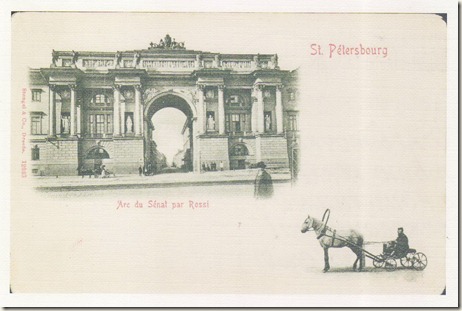
BE-93727 115- aя открыткa
Country: Belgium
Distance: 1,223 km
Travel time: 4 days
On postcard: Harry the 19 pounder Belgium Rabbit




